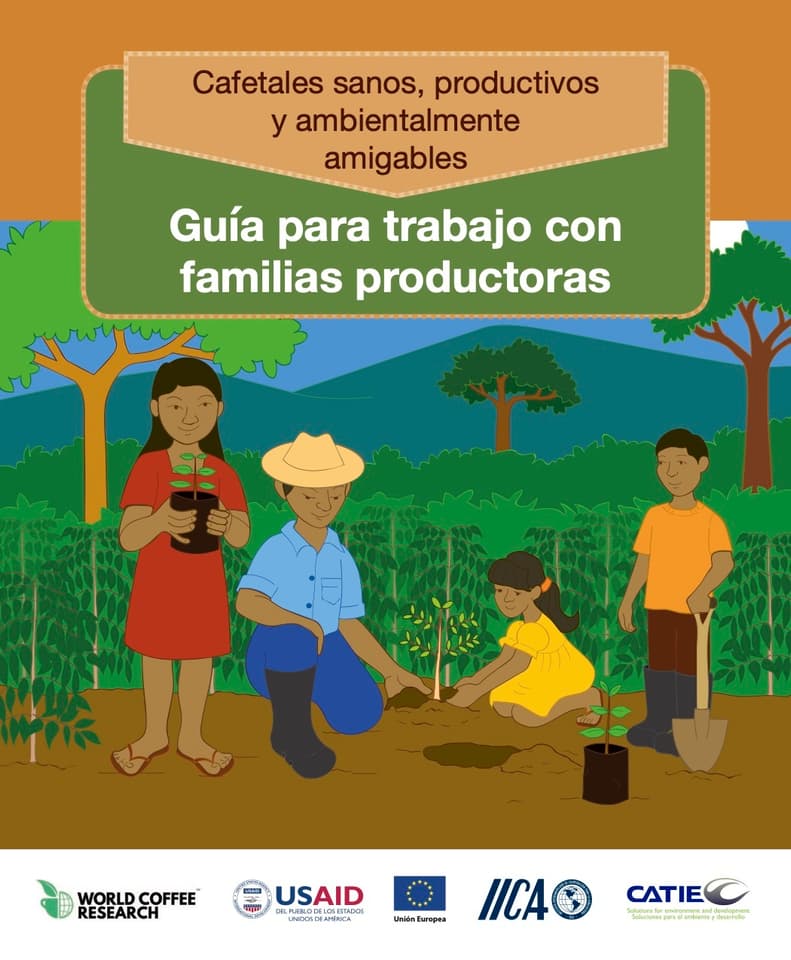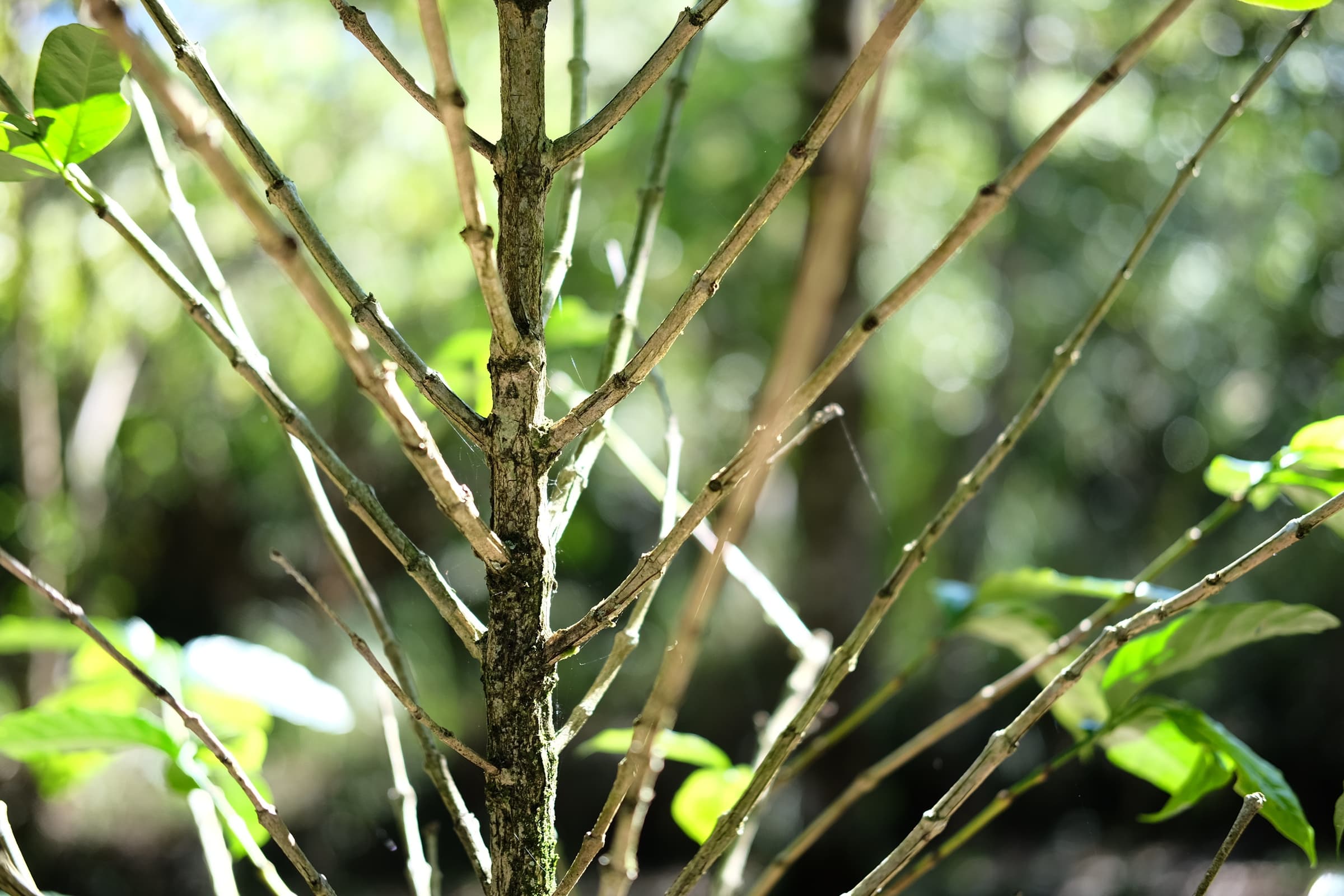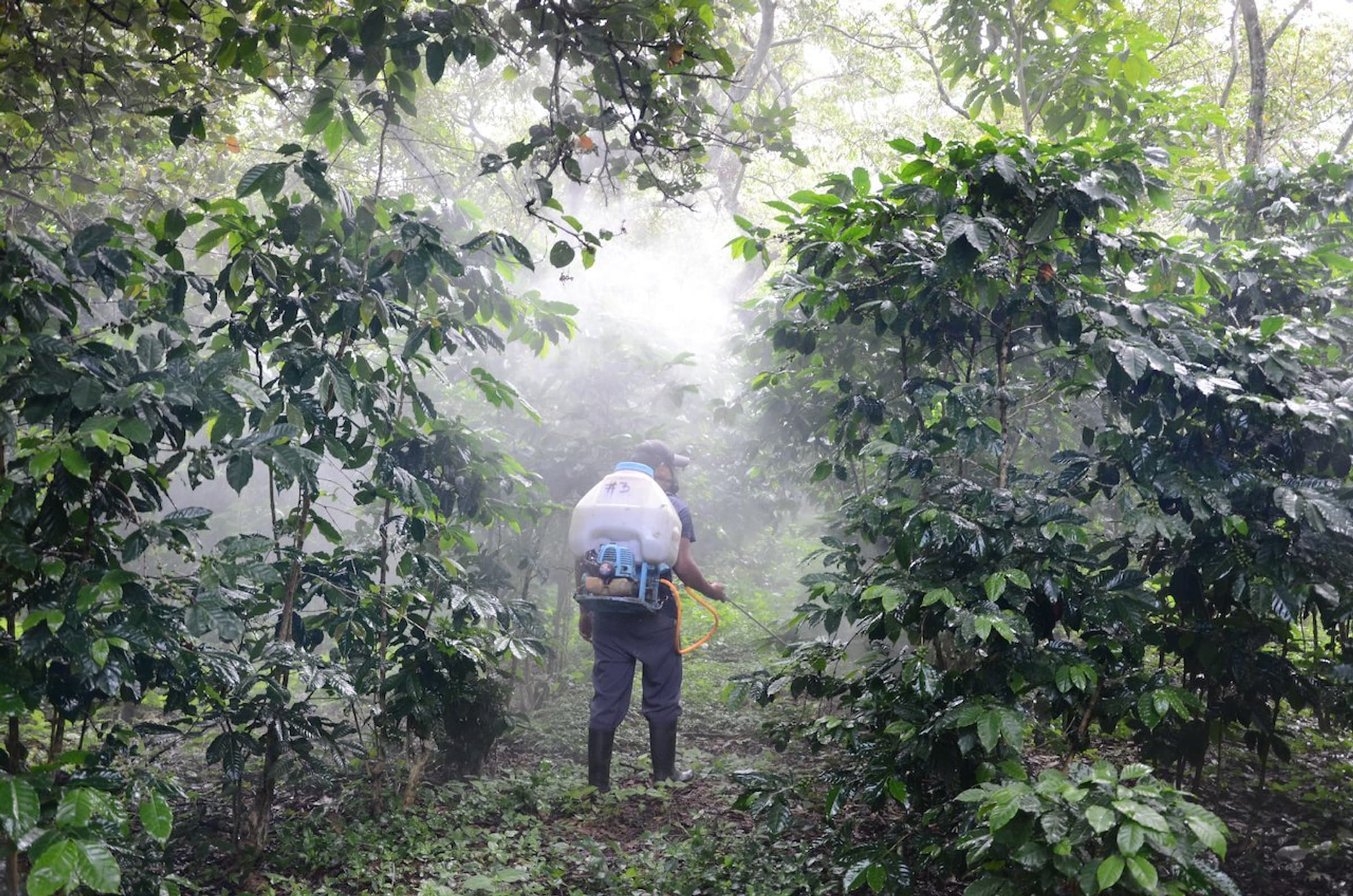New manual for resilient coffee farming
A how-to guide for small farmers in Central America
A new Spanish-language manual promotes research-backed farm practices and disease management in a simplified format geared toward small family farmers. The manual, titled Guía para trabajo con familias productoras, was produced by researchers at the Tropical Agricultural Research and Higher Education Center (CATIE), with funding from World Coffee Research (WCR) and other partners.
The manual presents simple and clear recommendations for good practices for holistic and sustainable farm health, placing a special emphasis on controlling coffee leaf rust. Also known as la roya, coffee leaf rust is an airborne fungal disease that devastated coffee production in many areas of Latin America after an epidemic of the disease broke out in 2012.

Healthy, Productive and Environmentally Friendly Coffee Trees
While many farmers have recovered from the initial decimation of their farms through the planting of disease-resistant varieties and improved farm management, the disease is now an ever-present reality for most farmers that must be constantly managed. Even in a good year, smallholder farmers may lose a significant percentage of their coffee production to leaf rust or other diseases. Holistic disease management, which goes beyond reliance on expensive fungicides and agrochemicals, is an important strategy for ensuring that coffee farming is profitable for family farmers.

A severe leaf rust infection causes the coffee tree to drop its leaves, incapacitating the plant's ability to use energy to grow and produce fruit.
Francisco Anzueto, WCR’s regional scientific coordinator for Central America, says the new manual helps farmers learn how to coexist with leaf rust. “The manual allows farmers to be informed and updated, learning about the disease itself and how it interacts with other factors such as the climate and the agronomic management of the plantations,” says Francisco. “The aim is a practical manual that helps farmers make the right decisions for how to coexist with rust and other diseases.”
The manual originated from a technical guide produced in 2016 by CATIE with support from WCR, USAID, the European Union, and the Central America-based rust-management organization PROCAGICA. The original technical manual delved into the science behind coffee leaf rust to give coffee agronomists, researchers, and technicians a detailed scientific guide for understanding rust and other diseases.
The new manual presents much of this valuable scientific content in a simplified format that farmers can put into practice. Salvador Urrutia Loucel, WCR’s programs director for Central America, says the manual is designed to be actionable immediately. “Producers will be able by themselves to identify the signs and symptoms of the main coffee diseases and their control methods and practices,” he says. “The manual has a photo gallery, as well as technical recommendations.”
CATIE will publish about 10,000 copies of the new manual for the network of countries involved in the Regional Cooperative Program for the Technological Development and Modernization of Coffee Production (PROMECAFE). Distribution will be made among small farmers assisted by PROCAGICA and the national coffee institutions.

The primary method of controlling leaf rust on many farms currently is spraying with costly fungicides; the manual helps farmers know how and when to apply it, but also lays out alternative strategies for managing rust that help minimiuze the use of agrochemicals.